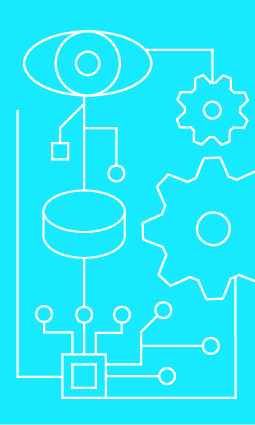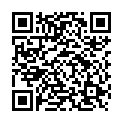|
|
|
| Module code: MST.AKT |
|
|
3V+1P (4 hours per week) |
|
5 |
| Semester: 6 |
| Mandatory course: yes |
Language of instruction:
German |
Assessment:
Written exam
[updated 10.05.2021]
|
MST.AKT (P231-0017) Mechatronics and Sensor Technology, Bachelor, ASPO 01.10.2012
, semester 6, mandatory course
MST.AKT (P231-0017) Mechatronics and Sensor Technology, Bachelor, ASPO 01.10.2011
, semester 6, mandatory course
|
60 class hours (= 45 clock hours) over a 15-week period.
The total student study time is 150 hours (equivalent to 5 ECTS credits).
There are therefore 105 hours available for class preparation and follow-up work and exam preparation.
|
Recommended prerequisites (modules):
MST.MSG The Basics of Mechatronic Systems
MST.TMM Mechanical Engineering and Machine Dynamics
[updated 30.08.2013]
|
Recommended as prerequisite for:
|
Module coordinator:
Prof. Dr.-Ing. Jochen Gessat |
Lecturer: Prof. Dr.-Ing. Jochen Gessat
[updated 01.10.2005]
|
Learning outcomes:
•Specialized:
After successfully completing this course, students will be able to explain the basic structure of drive systems consisting of final control elements, actuators, sensors and control equipment.
They will be able to determine system requirements at the mechanical interface of actuators (torque, rotational speed, force, velocity) using motion profiles.
Students will be able to explain the basic physical principles of direct current machines and derive the characteristic equations based on them.
They will understand data sheet specifications and the characteristic curves of actuators and will be able to solve design questions.
Based on their acquired knowledge, students will be able to mathematically describe the static behavior of actuators. They will be able to demonstrate the limits of a mathematical drive model.
While operating a motor test bench in the test field, students will be able to record and evaluate the characteristic curve of an asynchronous motor.
Students will be able to design and commission logical controls, especially with pneumatic actuators.
They will be able to construct a thermal equivalent circuit diagram of a motor for estimating load limits in continuous, cyclic and short-term operation.
Not subject related (e.g. teamwork, presentation, project management, etc.):
Students will be encouraged to actively participate in lectures and exercises by answering questions put to them.
During demonstrations (asynchronous motor, pneumatic circuits) smaller groups of students will be presented with a problem that they will solve together with a supervisor (teamwork, presentation).
[updated 10.05.2021]
|
Module content:
- Actuators as components of mechatronic systems
- Knowledge about how motion is generated on the basis of various physical effects and their phenomenological description and mathematical analysis.
- Components and designs of the various actuators.
- Characterization of different actuators by means of characteristic curves.
- Applications, selection and dimensioning.
Week 1: Introduction to the subject area:
Definitions, overview of actuators, operating states, energy storage
Week 2: General mechanical system requirements:
Transmission elements: Power balance, speed adjustment
Week 3: Mechanical system requirements for the actuator shaft:
Conversion to a reference point
Week 4: Introduction to electro-mechanical actuators:
History, operating modes, standardization and specifications, physical principles, magnets, classification possibilities and examples
Week 5: Model of an idealized linear motor
Physical principle and the derivation of the map equation
Week 6: DC motors 1
Motor data, operating ranges and characteristics; selection procedure
Week 7: DC motors 2
Thermal behavior
Week 8: Brushless DC electric motor (BLDC), stepper motors:
Motor data, operating ranges and characteristics; selection procedure
Week 9: AC motors: Single-phase AC motors (universal motor, capacitor motor), three-phase AC motors (PMSM, ASM)
Motor data, operating ranges and characteristics; selection procedure
Week 10: Practical experiment ASM characteristic curve measurement
Electrohydraulic drive unit for measuring the speed/torque characteristic curve of an ASM
Week 11: Fluidic actuators – Pneumatics (in a practical experiment):
AND/OR linkage, end position detection of cylinders and self-holding circuits, modeling
Weeks 12 and 13: Fluidic actuators – Hydarulics
Controlled hydraulic linear drive, design example with modeling
Week 14: Actuators with special effects and thermal actuators
Piezoelectric actuators, magnetostrictive actuators, electrochemical actuators, thermally initiated actuator elements: physical principles, characteristic curves
Week 15: Examination criteria, exam preparation, exam preparation and discussion
[updated 10.05.2021]
|
Teaching methods/Media:
Lecture with PowerPoint presentation, practical experiments, slides and exercises in printed form
Manufacturer catalogs and data sheets
[updated 10.05.2021]
|
Recommended or required reading:
Actuators in general
W. Roddeck, Einführung in die Mechatronik, Teubner Verlag
P.A. Tipler, Physik, Spektrum Verlag
H. Janocha (Hrsg.), Aktoren, Springer Verlag B. Heimann, W. Gerth, K. Popp, Mechatronik, Hanser Lehrbuch
Hydraulics:
Einführung in die Ölhydraulik (HTW online resource)
Hans Jürgen Matthies ¦ Karl Theodor Renius
Hydraulik: Grundlagen, Komponenten, Schaltungen (HTW online resource)
Dieter Will und Norbert Gebhardt von Springer, Berlin
Pneumatics
W. Deppert, K. Stoll, Pneumatische Steuerungen, Vogel Fachbuch
P. Croser, F. Ebel, Pneumatik, (Fa. Festo Didactic), Springer 1997
Electric motors
H. D. Stölting, E. Kallenbach, Handbuch Elektrische Kleinantriebe, Hanser Verlag 2001
E. Hering, R. Marin et al, Elektrotechnik und Elektronik für Maschinenbauer, VDI Verlag 2011
G. Fehmel et al, Elektrische Maschinen, Vogel Fachbuch 1996
R. Hagl, Elektrische Antriebstechnik, Hanser, ISBN 978-3-446-43350-2
[updated 10.05.2021]
|


